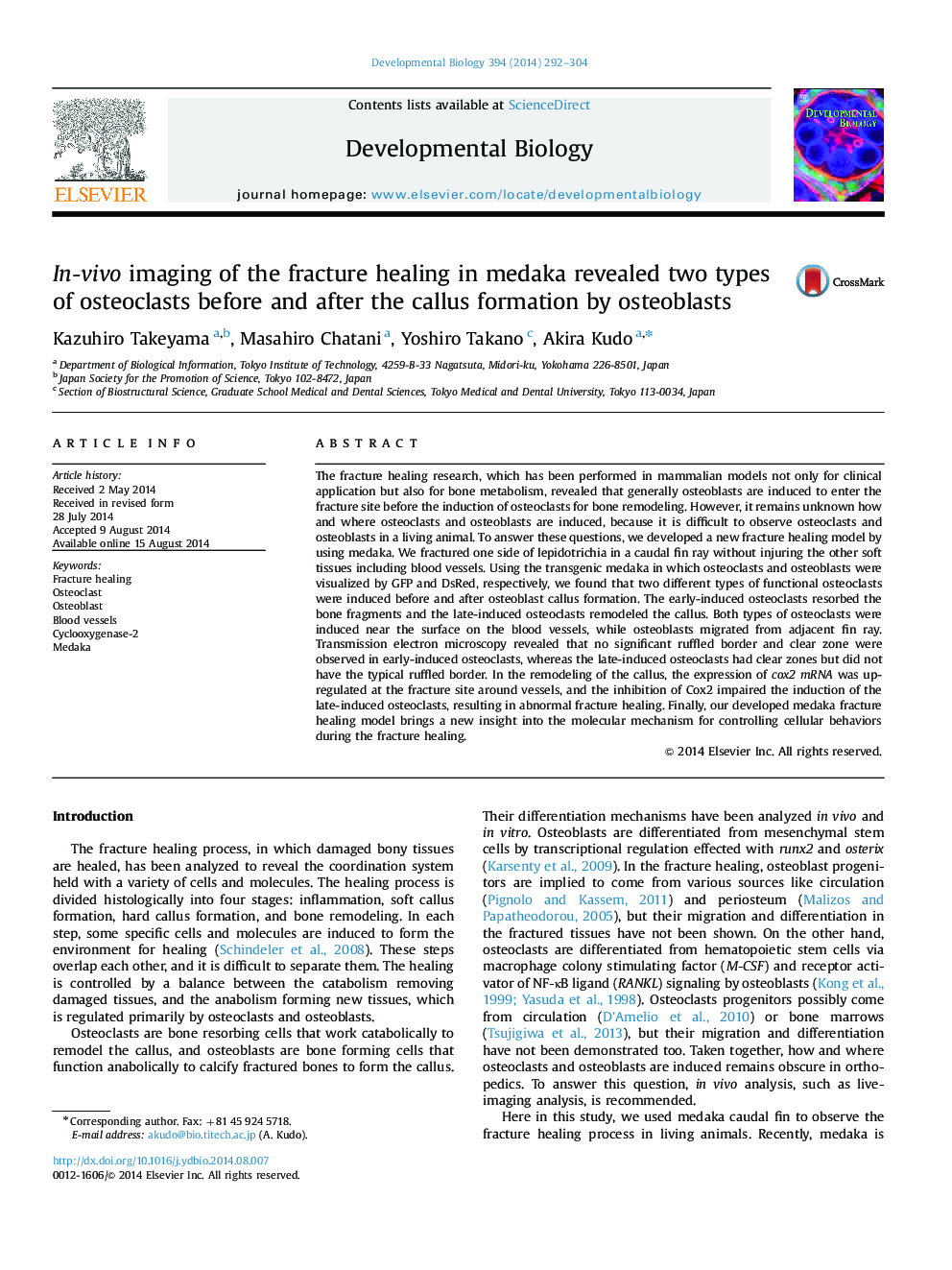| کد مقاله | کد نشریه | سال انتشار | مقاله انگلیسی | نسخه تمام متن |
|---|---|---|---|---|
| 10931564 | 1093651 | 2014 | 13 صفحه PDF | دانلود رایگان |
عنوان انگلیسی مقاله ISI
In-vivo imaging of the fracture healing in medaka revealed two types of osteoclasts before and after the callus formation by osteoblasts
دانلود مقاله + سفارش ترجمه
دانلود مقاله ISI انگلیسی
رایگان برای ایرانیان
کلمات کلیدی
موضوعات مرتبط
علوم زیستی و بیوفناوری
بیوشیمی، ژنتیک و زیست شناسی مولکولی
بیولوژی سلول
پیش نمایش صفحه اول مقاله

چکیده انگلیسی
The fracture healing research, which has been performed in mammalian models not only for clinical application but also for bone metabolism, revealed that generally osteoblasts are induced to enter the fracture site before the induction of osteoclasts for bone remodeling. However, it remains unknown how and where osteoclasts and osteoblasts are induced, because it is difficult to observe osteoclasts and osteoblasts in a living animal. To answer these questions, we developed a new fracture healing model by using medaka. We fractured one side of lepidotrichia in a caudal fin ray without injuring the other soft tissues including blood vessels. Using the transgenic medaka in which osteoclasts and osteoblasts were visualized by GFP and DsRed, respectively, we found that two different types of functional osteoclasts were induced before and after osteoblast callus formation. The early-induced osteoclasts resorbed the bone fragments and the late-induced osteoclasts remodeled the callus. Both types of osteoclasts were induced near the surface on the blood vessels, while osteoblasts migrated from adjacent fin ray. Transmission electron microscopy revealed that no significant ruffled border and clear zone were observed in early-induced osteoclasts, whereas the late-induced osteoclasts had clear zones but did not have the typical ruffled border. In the remodeling of the callus, the expression of cox2 mRNA was up-regulated at the fracture site around vessels, and the inhibition of Cox2 impaired the induction of the late-induced osteoclasts, resulting in abnormal fracture healing. Finally, our developed medaka fracture healing model brings a new insight into the molecular mechanism for controlling cellular behaviors during the fracture healing.
ناشر
Database: Elsevier - ScienceDirect (ساینس دایرکت)
Journal: Developmental Biology - Volume 394, Issue 2, 15 October 2014, Pages 292-304
Journal: Developmental Biology - Volume 394, Issue 2, 15 October 2014, Pages 292-304
نویسندگان
Kazuhiro Takeyama, Masahiro Chatani, Yoshiro Takano, Akira Kudo,